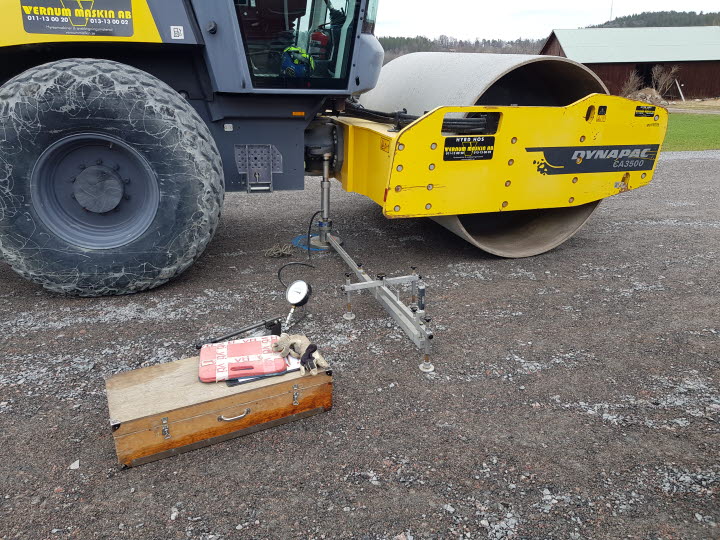
Plate loading
VTI performs static plate loading according to the Swedish Transport Administration method description TDOK 2014:0141 (which is based on the German standard 'DIN 18134').
Static plate loading is a method used to measure the bearing capacity of unbound layers. These may be the normal layers of a road, the subgrade, the sub base layer or the base layer. It may also be the foundation layer for building construction, such as the layer under a concrete slab.
During plate loading a circular steel plate is loaded using a jack mounted against a counterweight/kentledge, often a heavy work vehicle. Loading is carried out in two stages: the first has a normal maximum load of 0.5 MPa (approx. 3.6 tonnes) and the second loading is about 90 per cent of the first. The stages consist of several steps. The deformation of the plate is recorded at each step.
The deformation modules Ev1 and Ev2 are calculated from the loading and deformation values.
Requirements are often for the Ev2-value and of the ratio of Ev2/Ev1. Requirements can be found in "AMA Anläggning" which for road contexts refers to the Swedish Transport Administration's "TDOK 2013:0530 Obundna lager för vägkonstruktioner". These documents also regulate how many points thats ought to be measured. What requirements apply for each object/project is governed by the contract between client and contractor.
VTI generally performs this work in Östergötland and adjacent counties, but can also undertake assignments in other parts of the country.
General information
- one point takes about 30–40 minutes to measure
- the client provides the counterweight (about 8 tonnes)
- the measurement is reported in a document containing a summary and settling data for each point
Prices
- personnel (1100 SEK/hour)
- equipment (2600 SEK/day)
- vehicle and travelling expenses are added.
Contact
-
Håkan Arvidsson
Laboratory Coordinator
hakan.arvidsson@vti.se -
Henrik Hellman
Engineer
henrik.hellman@vti.se
